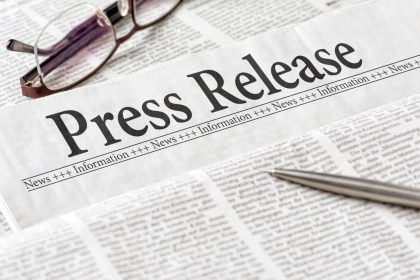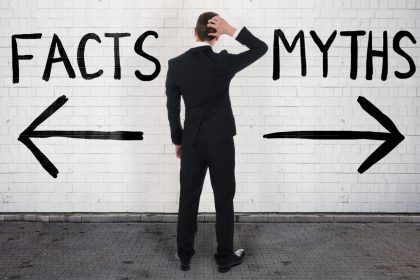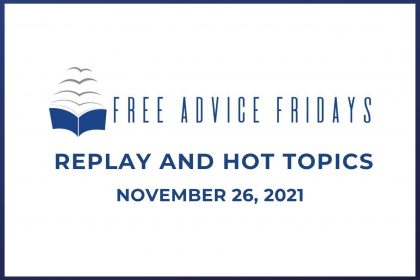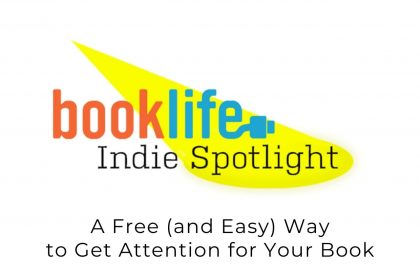
As a lifelong word nerd with degrees in creative writing, I’ve attended a lot of readings and talks by authors over the years. Recently, I had the opportunity to stand at the lectern myself and host an event promoting my first book. It was a learning experience, it was nerve-racking, and it was wonderful. Read on for some key takeaways!
What I Did
I held the event at my favorite local indie bookstore, Lift Bridge Book Shop in Brockport, New York, which I’ve been shopping at for probably 20 years. It was the first store I approached about stocking the book, and the owners were enthusiastic about hosting an event.
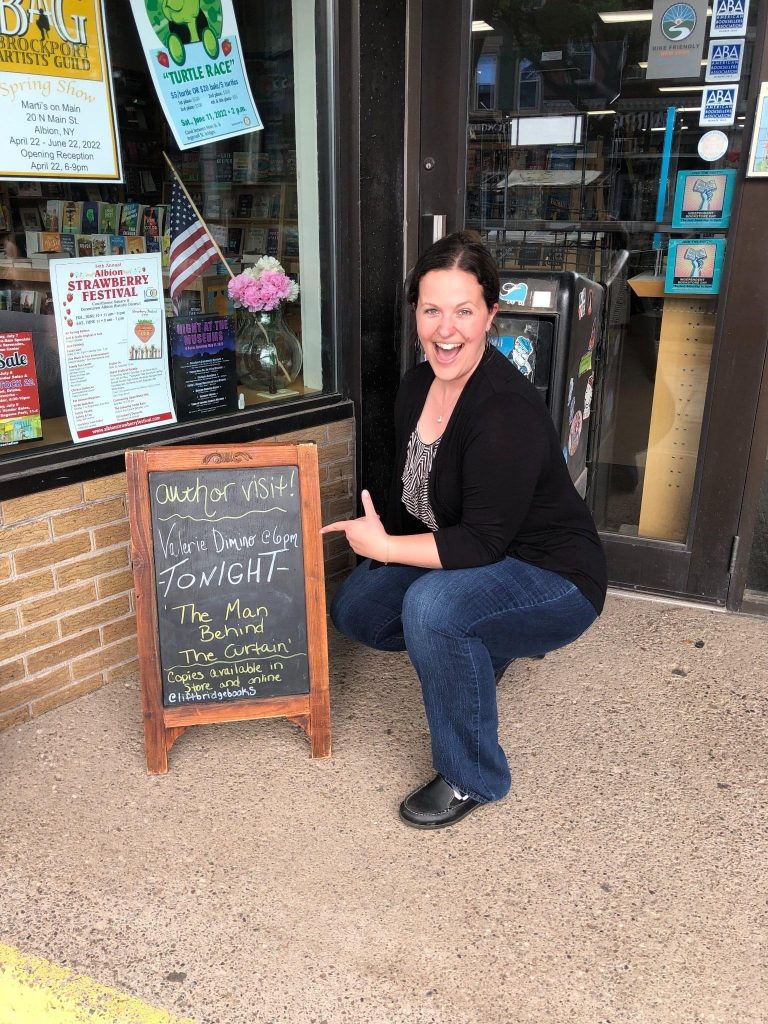
We marketed this as an “author visit,” ie, more than just sitting at a table to sign books and hoping to strike up conversation with customers passing by. (I’m an introvert, so I fear that must be SO AWKWARD.) The evening included a brief reading and discussion, Q&A, and book signing. I chose five excerpts to read, most two or three minutes long and one a bit longer, and gave some context before each as to how it fit into the overall narrative or what I hoped it would illustrate about the book’s themes. Including the Q&A, during which I received five very thoughtful questions, that more formal part of the program took about 45 minutes. I then invited people to stay and mingle, browse the store, and come up to say hello and get their book signed if they’d like.
I brought about 20 copies each of my paperback and hardcover author copies, which I’d ordered well in advance from IngramSpark (whose shipments can take several weeks). The store owners had the copies for sale at the register, which simplified things for all of us. I worried I may have inundated them with too many copies, but it was a good thing I brought that many, as we sold 15 that night, and then the store bought a few more to fill what had been on their shelves.
I ordered a cookie tray from a local bakery and set that out with bottled waters at the back of the room. This was a minor expense I was happy to pay to thank my attendees and encourage them to mingle.
Near the middle of the room, I set out a few handouts:
- A bookmark I designed in Canva (the free version offers a great variety of templates and design capabilities), using artwork corresponding with the book’s cover, with a simple message thanking the reader and asking them to consider writing a review or recommending the book to a friend. Thanks to advice from Keri and fellow Free Advice Fridays attendees, I had them printed by a local printer in my town, which proved to be both inexpensive and quick.
- A short list of reading recommendations, designed simply in Microsoft Word and printed at home, for people who may want to read more on a similar theme. These books were my comp titles and such helpful research and inspiration in my writing process.
- A few of my “one-sheets” about the book, designed based on a Canva template purchased in the New Shelves store and printed at home.
What Worked Well
To promote the event, I created a simple design in Canva using the dimensions for an Instagram post, which, as I learned thanks to my sage cover designer, also works seamlessly across other social media platforms (no compressed or stretched image distortion — yay!). I posted that graphic on Instagram, Facebook, Twitter, and LinkedIn, tagging the store and adding a variation of the post to my Instagram and Facebook stories a few times leading up to the event date. I also created an event page within Facebook and invited people shamelessly, tagged the store as the location, and shared that event page in a post on my newsfeed and in a couple of local writing-related Facebook groups. All of those posts were public, which meant (a) they were shareable and (b) I received reactions and responses even from people I don’t know.
Thanks to the experienced recommendation of the store owner, we listed the start time as 6:30 pm but with a “doors open” time of 6 pm. This allowed people time to trickle in, browse around, say hi to me, and mingle with others before anything formal was going on. I was glad to have that settling-in time, and it seemed my guests enjoyed it too.
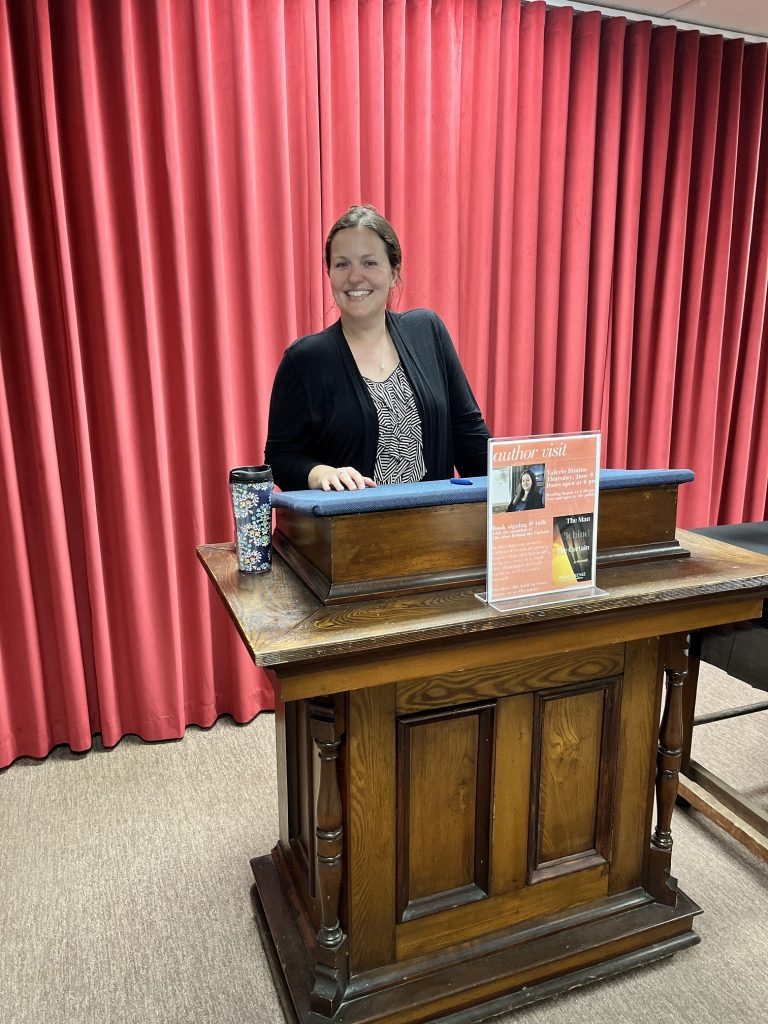
I had been expecting about 10 attendees and secretly hoping that 12-15 might be realistic. Imagine my surprise and joy when 30 showed up!
I encouraged attendees to browse the store before and after the program, both as a post in the Facebook event page (which also served as a touchpoint leading up to the event) and in person while we were there. As such a long-time fan of the store, this was natural and is something I’m passionate about (#shopsmall!), and it was a nice way to thank the store owners for being so great to work with.
My partner took photos throughout the evening, which have been fun to share on social media and which I’ll add to my website, and recorded the talk on video, which was helpful to watch back.
Planning this first event in an environment in which I felt comfortable, with shop owners who were so supportive, made for a fitting kickoff, easing my nerves and helping the whole thing feel all the more celebratory.
What I'd Change
Since I worked on this book for years, I tend to feel like everyone who knows me has heard a lot about it; I worry about repeating too much information. Similarly, since I knew that a few of my nearest and dearest who were attending had already read the book, I extrapolated that to assume that most attendees had read it. In the interest of everyone’s time, I barely touched on an overview of the book in my introduction. After the event, several people mentioned that they’re looking forward to reading it, and I realized I could have summarized things more effectively and chosen my talking points more strategically were I catering more to those audience members. Better to mention some things that some attendees already know than to leave some in the dark.
I didn’t think to ask whether people in the back of the room could hear me, and afterward a couple of them mentioned it had been difficult to hear at times. One attendee suggested that at future events I repeat the questions during the Q&A, as she could hear my answers but not always the questions. Simple steps I can take next time to help provide a better experience.
I didn’t think to mention my handouts, and most people overlooked them. At future events, I’ll point them out and maybe touch briefly on the comp titles that are listed on the reading recommendations. Furthering the conversation around the book’s themes is always helpful.
In inviting people, my direct outreach was limited to a few who had been closely involved with the development of the book and a few who don’t have Facebook accounts. Beyond that, I relied mostly on the Facebook event page, in conjunction with my posts across social media, to give the details and reminders that the date was coming up. Afterward, I heard from several people who would have liked to attend but either hadn’t seen or had forgotten about those posts. More direct outreach is a must.
Furthermore, in promoting future events, I’d like to try some additional marketing tactics like printed flyers distributed to local libraries, bookstores, and other businesses. I can design something simple myself and print it at home, another inexpensive way to spread the word and hope to build additional community support.
What I Learned
Beyond those more specific action items I’ll work on for next time, there were a couple of bigger-picture takeaways here:
There’s a lot of variety in how these events are structured; mine is just one of countless examples. I knew what I wanted — and didn’t want — the event to be, and this experience gave me confidence that the venue and guests will be receptive to that. So, make yours what you want it to be, rather than trying to force a fit into some predetermined mold.
Leading up to the event, I’d been excited but also nervous, stressed, and at times overwhelmed by all the logistics and preparation. The nerves were still there as the room filled in and as I began my talk, but the predominant emotion I felt throughout the evening was gratitude. People who come to your author event are there to see you, to support you — it’s not only a supportive group but an enthusiastic one. Perhaps some nerves are inevitable, but I hope for the next one I can let the excitement and gratitude take the lead earlier on — and I hope you can for your events too.
Valerie Dimino is the coauthor of the memoir The Man Behind the Curtain, about a survivor of sexual abuse whose family and community tried to silence her when the truth came out. Dimino has been passionate about writing since kindergarten, when she wrote and illustrated her first short story in marker. Holding bachelor’s and master’s degrees in creative writing from SUNY Brockport, she has 14 years of professional writing, editing, and marketing experience in the fields of higher education, performing arts, and medical informatics. She lives in Lakeville, New York, with her partner, Rich. She blogs and shares more of her writing life at valeriedimino.com. Connect with her on Instagram and Twitter at @valeriedimino





